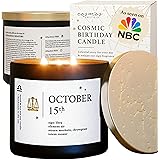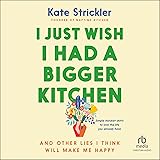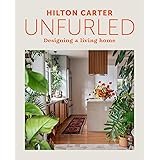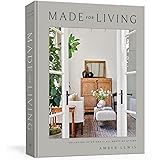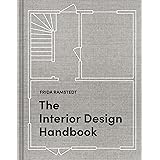Overcoming “Too Much Stuff”: Essential Design Strategies to Declutter Your Home
Have you ever looked around your home and felt overwhelmed by the sheer volume of items, sensing that there’s just “too much stuff” everywhere? Many homeowners grapple with this very common challenge. As Rebecca Robson aptly demonstrates in the accompanying video, the desire to fill every available space can often lead to a cluttered, busy aesthetic rather than a serene, inviting one. Understanding how to discern between necessary decor and visual clutter is a pivotal step in creating a truly beautiful and peaceful living environment.Indeed, a wall’s existence does not necessitate an item on it. This principle, often overlooked, forms the foundation of a harmonized home. The goal is not merely to remove items but to thoughtfully curate your surroundings. This process transforms your living spaces from a collection of possessions into a sanctuary of style and comfort. Consequently, focusing on deliberate placement and purposeful decor can significantly enhance the ambiance of any room.
The Overabundance Dilemma: Recognizing Visual Clutter in Your Home
The feeling of a room being “busy” or lacking peace often stems from an excess of items. This visual noise prevents the eye from resting, creating an unsettled sensation. It affects not only aesthetics but also the psychological comfort of your home. A cluttered environment can induce stress and make a space feel smaller and less functional than it truly is.
Furthermore, recognizing visual clutter is the first step toward achieving clarity. Consider the visual weight each item carries; a multitude of small objects can collectively overpower a room. In contrast, fewer, larger, and more impactful pieces often create a stronger design statement. Therefore, a strategic approach to what you display is crucial for establishing spatial balance.
Curating Accessories: Less is Truly More
Accessories, while essential for personalization, are frequently a primary source of overwhelming “too much stuff.” Rebecca’s critique of Tandsbrown’s fireplace mantle, laden with numerous family photos and small decor items, exemplifies this common issue. Such accumulations, though often well-intentioned, can detract from a room’s overall elegance.
Re-evaluating Sentimental Items
It is certainly understandable to cherish sentimental items, as these possessions hold significant personal value. However, a room filled with framed photos on every surface, as seen in Vinnie’s home, can quickly become visually stagnant. A practical solution involves modern technology to preserve these precious memories without overwhelming your decor.
For instance, a digital frame, such as the Aura Frame mentioned by Rebecca, allows you to display a vast collection of photographs in a dynamic rotation. This method offers the joy of constantly changing memories without sacrificing valuable surface space. It provides a contemporary alternative that honors sentiment while maintaining a refined aesthetic, moving beyond the “sea of stuff” concept.
The “Bare Bones” Approach to Decorating
Rebecca’s advice to “take it down to the bare bones and start all over” is a powerful, transformative strategy. This method involves removing all accessories from a space, allowing you to see the room’s fundamental structure and potential. Subsequently, you can reintroduce items intentionally, selecting only those that truly enhance the design and contribute to a sense of peace.
This process encourages a more thoughtful curation, ensuring that each piece serves a purpose or adds significant aesthetic value. It fosters a connection with your decor, allowing individual items to stand out and be appreciated. The result is often a classier, more refined space that truly reflects your desired style.
Tackling Dated Decor Elements
Certain decorative pieces, while popular in their time, can become dated and contribute to an outdated aesthetic. The filigree iron piece above a door, as identified in Tandsbrown’s submission, serves as a prime example. While personal preference always plays a role, understanding current design sensibilities can help prevent your home from feeling stuck in a past era.
Periodically reviewing your decor for elements that no longer align with contemporary tastes or your evolving personal style is beneficial. Updating or removing such items can significantly refresh a room without a complete overhaul. This thoughtful approach ensures your home remains current and visually appealing.
Achieving Cohesion in Furniture and Textiles
Beyond small accessories, furniture itself can contribute to a feeling of “too much stuff,” especially when mismatched or ill-placed. The examples from Steven’s and Sonja’s living rooms, featuring multiple disparate chairs, highlight this issue. While variety can be interesting, a lack of cohesion often leads to visual chaos.
Unifying Disparate Furniture Styles
When multiple furniture pieces with different styles and silhouettes occupy a single space, they can create visual discord. Steven’s room, with three distinct chair types, illustrates this point, despite their matching ivory fabric. To foster a sense of unity, consider focusing on a shared element, such as a consistent color palette or complementary textures.
For instance, Sonja’s room, with its array of different chairs and throws, could achieve greater harmony by incorporating five identical throws. This simple textile choice instantly introduces a cohesive visual rhythm, even if the underlying furniture styles differ. Such strategies help to bridge stylistic gaps, making the room feel more intentional and less haphazard.
Strategic Furniture Placement
Proper furniture placement is paramount in mitigating the “too much stuff” sensation, even when furniture items are not excessively numerous. A well-arranged room optimizes flow and creates designated zones for various activities, preventing a cluttered appearance. For example, moving a piano to a more central, balanced position, as suggested for Steven’s room, can dramatically alter a room’s perception.
Even a single bar stool or an awkwardly positioned chair can disrupt the visual balance of a room. Considering how each piece relates to others and to the overall architecture of the space is vital. Thoughtful arrangement ensures that every item contributes positively to the room’s function and aesthetic.
Mastering the Art of Display: Bookcases, Walls, and Vignettes
The impulse to fill every shelf, every wall, and every corner can quickly lead to an overwhelming environment. Understanding how to display items thoughtfully, rather than simply placing them, is an art form that transforms cluttered spaces into curated showcases.
The 40% Rule for Bookcases
Bookcases, while practical, often become repositories for an excessive number of books and decorative objects. Steven’s bookcase, described as making Rebecca “feel busy,” exemplifies this common issue. The directive to “take 40% out of that bookcase” is a bold, yet effective, challenge.
This “40% rule” is not arbitrary; it encourages the creation of vital negative space. When styling shelves, aim for a mix of vertical and horizontal arrangements, varying heights, and incorporating small decorative elements alongside books. This approach allows the eye to rest, making the display feel intentional and aesthetically pleasing rather than merely full.
Thoughtful Wall Decor
The tendency to adorn every wall space can ironically diminish the impact of individual pieces. Gerrit’s family room, with pots across cornices and signs down hallways, illustrates the perils of over-decorating walls. Instead of filling every void, the focus should be on creating focal points and visual interest through vignettes.
A vignette is a small, intentional grouping of objects that tells a story or creates a cohesive display. Catherine’s space, with numerous small signs, could benefit from this approach. Instead of scattering items, grouping a few select pieces on a console, perhaps with a mirror and strategically placed pots, transforms clutter into a curated scene. This method highlights specific items and enhances the overall design.
Optimizing Window Treatments
Window treatments are often overlooked in the quest to address “too much stuff,” yet their incorrect application can significantly detract from a room’s aesthetic. Bertha’s bedroom, with its too-short window panels, provides a clear example. Proper window treatments should enhance a room’s sense of height and luxury, not highlight deficiencies.
Correctly sized curtains should ideally “kiss” the floor, or puddle slightly for a more opulent look, and be wide enough to provide substantial coverage. Doubling the width of panels, as Rebecca did for Catherine from Do It On A Dime, dramatically improves opacity and creates a more luxurious, tailored appearance. Investing in appropriate window coverings immediately elevates a room’s sophistication, creating a finished and polished look that prevents the impression of an unfinished or haphazard space.
Practical Steps to Begin Your Decluttering Journey
Embarking on a decluttering journey can feel daunting, particularly when faced with years of accumulated items. However, the path to a serene home begins with actionable steps. Remember Rebecca’s overarching advice: thin it down, take it out, take it off, and you’ll achieve something far superior. The initial act of removing everything allows for a fresh perspective and intentional reintroduction.
Consider challenging yourself with specific reduction goals, such as removing 50-60% of accessories or applying the 40% rule to bookcases. This targeted approach can be less overwhelming than a general “declutter everything.” Focus on creating functional and beautiful spaces, embracing thoughtful curation over excessive accumulation. By doing so, you will transform your home from a repository of “too much stuff” into a haven of peace and refined elegance.


